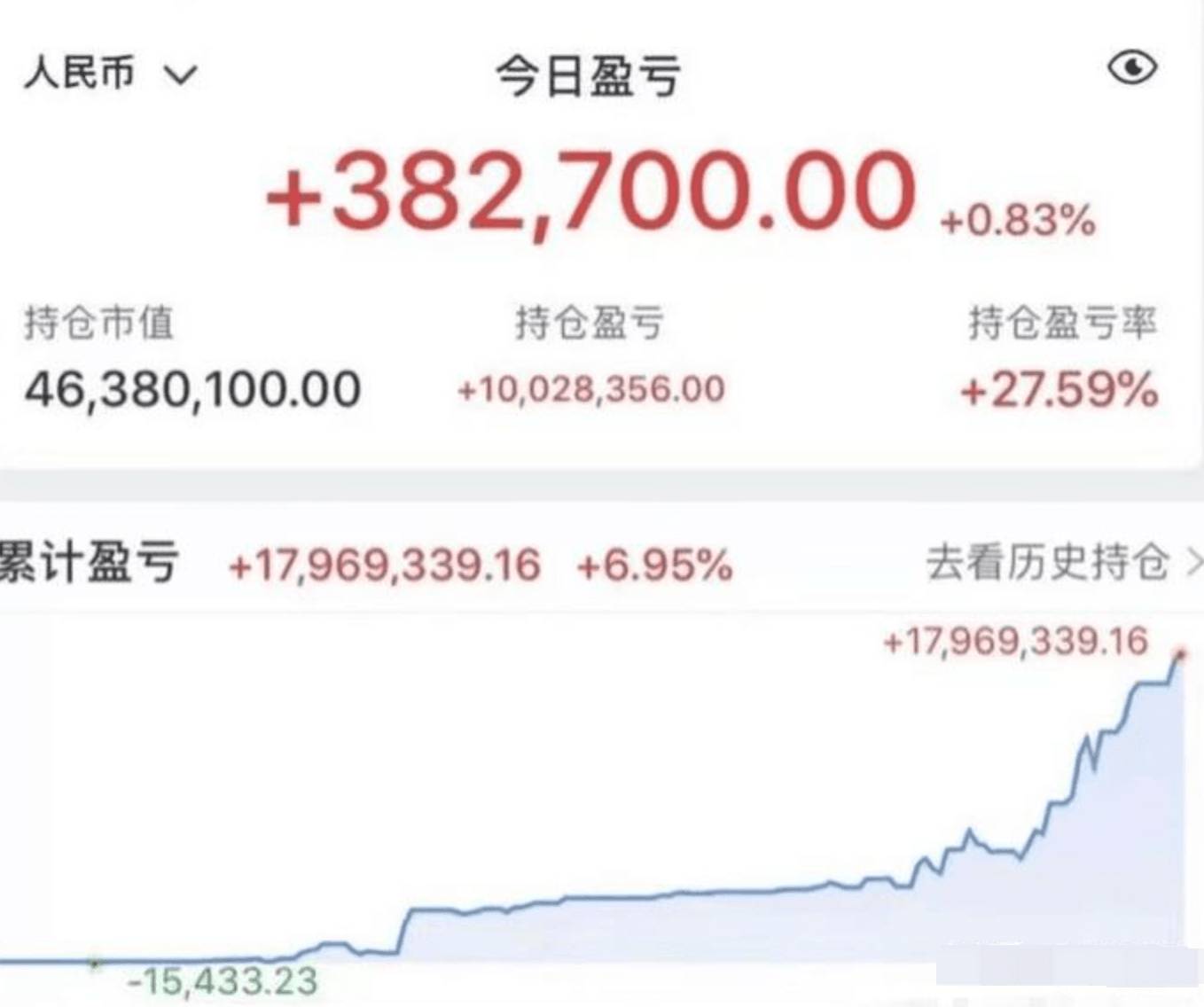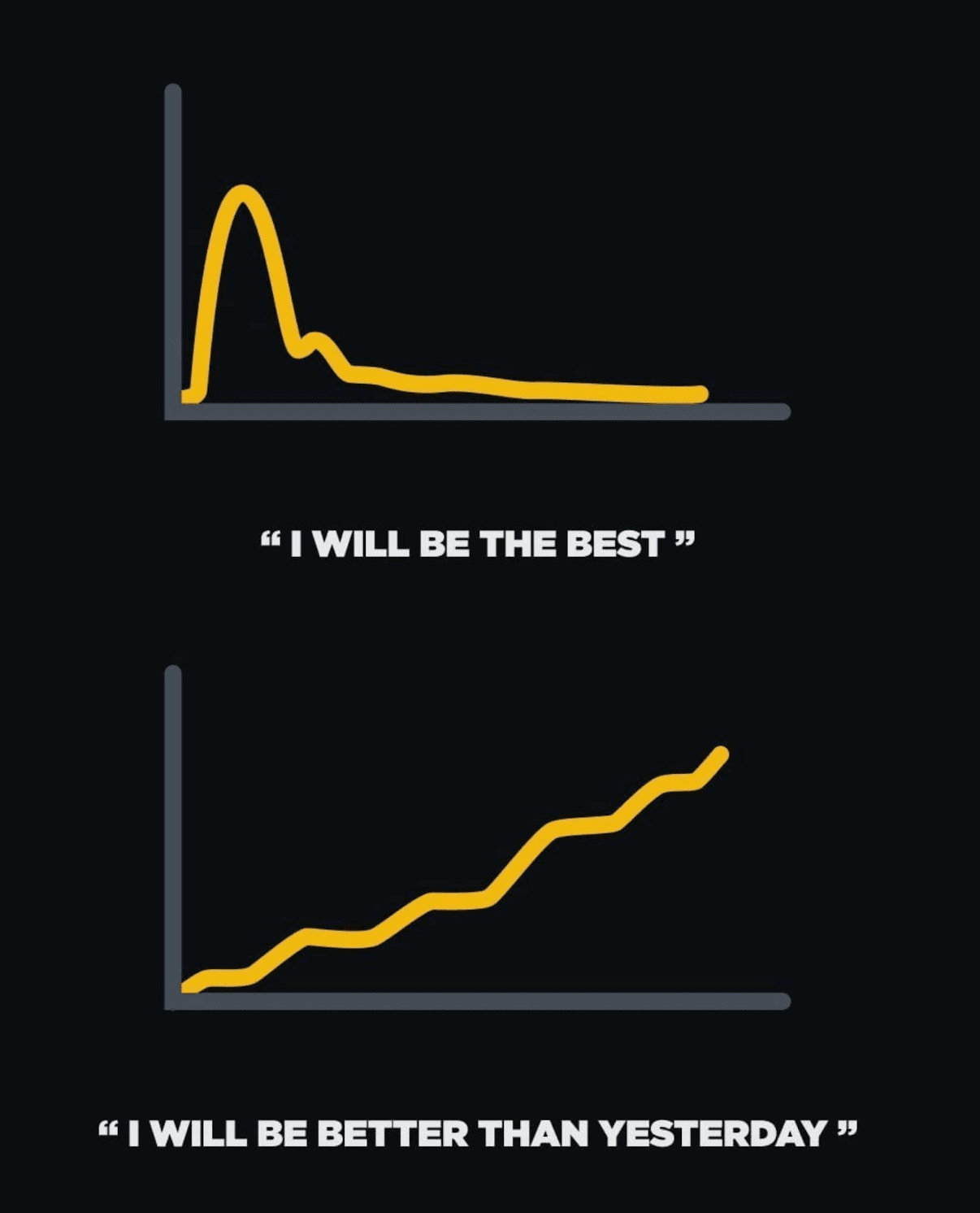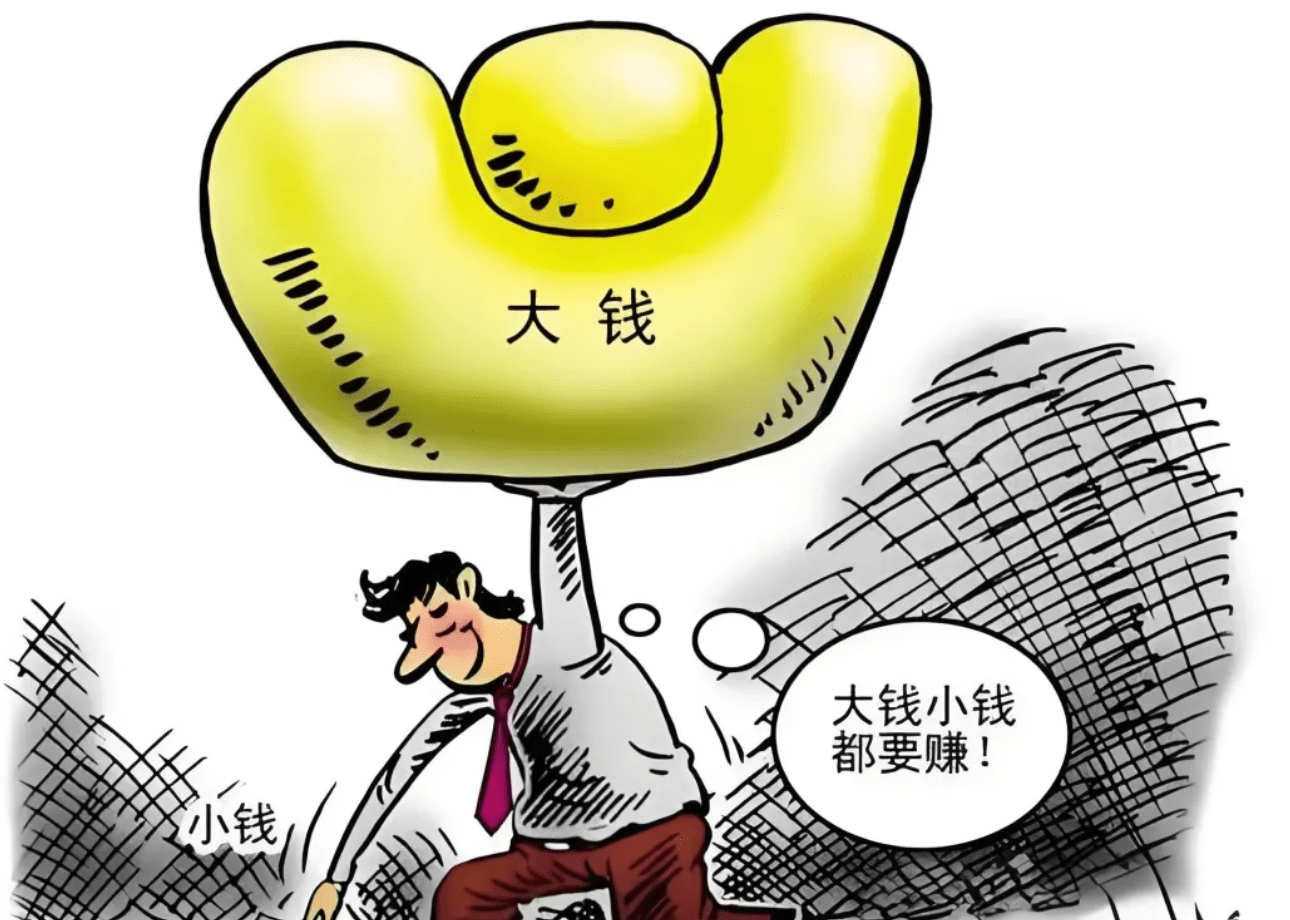If you are determined to stay in the crypto space for a lifetime, and hope one day to trade cryptocurrencies for a living!
So, please remember the iron laws and practical tips shared below; the content is not much, but every sentence is valuable. Share with those who are destined to benefit!
Trading cryptocurrencies has never been an easy task; every trader entering the crypto space must go through countless setbacks. Some people get knocked down, while others stand up successfully. The difference lies in whether one can transform the hardships experienced into growth nutrients. Everyone goes through experiences; however, not everyone is good at reflection and summarization.
My cryptocurrency trading journey has been full of ups and downs. Looking back, I have a lot of reflections. Today, I specifically organized the essence of my experiences to share, hoping to help many traders avoid detours.
As long as you remember these few phrases, you’re already halfway to success!
1. Short-term trading.
1. Daily focus only on the top ten mainstream coins; based on current market hotspots, news, daily MACD golden crosses, BOLL convergence and divergence, combined with market trends, comprehensively consider and select highly volatile varieties to trade.
2. Control your position well:
50,000 divided into 20% means 5 parts; take one part each time to build a position.
3. Never go all in; at most, 50%; always leave 50% of your capital to wait for opportunities.
4. Don’t exceed 3 trades in a day; you must control your hands.
5. Never add to a losing position. If you enter a position and lose 30%, exit promptly; this indicates the timing of your entry was incorrect.
6. Set a stop-loss at 30%; if it breaks, close the position unconditionally; don’t hold the position; holding a position will lead to death.
7. Never fall in love with candlestick patterns; enter and exit quickly, remember!!!
8. Go with the trend, trend is king; only trade in mainstream assets, not small altcoins!
2. Crypto survival mantras (recommended to memorize).
1. If there's a big drop in the morning, don’t rush to exit; generally, there will be a rebound in the afternoon!
2. If there’s a big rise in the afternoon, reduce your position; there’s a high probability of a retracement at night!
3. A rise with decreasing volume will continue to rise; a decline with decreasing volume will continue to decline.
4. Major meetings or positive news will often lead to rises, but once they come to fruition, there will be a drop.
5. In the daytime when there’s a continuous drop in the domestic market, you should bottom-fish; at 21:30, foreigners will pump the market.
6. The key signals for buying and selling are spikes; the deeper the spike, the stronger the buy and sell signals.
7. When you are heavily invested, you will definitely face liquidation; why? You are on the exchange's list of key liquidation targets.
8. After your short position's stop-loss is completed, it will definitely drop; if it doesn't trick you off the ride or explode, how could it drop?
9. Just when you are about to break even, and it’s just a bit away, the rebound suddenly stops; how can it let you exit and run?
10. When you take profits, you will pull the market; if you don’t exit, how can the market be pulled? The load is too heavy.
11. When you're excited, the waterfall will arrive as expected; your excitement is also a bait from market makers.
12. When you have no money, every project seems to rise, making you FOMO and rush to enter the market. So, you understand that the market is manipulated with over 80% probability; you must control your position while ensuring to act decisively, clearly understanding that before the market maker's operation, you must firmly refrain from entering; once you do, you're at the mercy of the exchange.

As someone who has experienced more than two bull markets, I sincerely have a few feelings, all gained from stepping into pitfalls and causing myself considerable losses, resulting in valuable experience!
First, do not always think about swing trading.
At this stage, the market is in the mid-to-late stage of a bull market, coupled with favorable factors such as interest rate cuts, leading to sudden rises. Corrections often just serve as a break after a rise; many people think about bottom-fishing and topping out, but keep flipping around and miss out on the main upward wave.
Especially in a bull market, sometimes the rise is truly a straight line on the 5-minute candlestick; if you react slowly, you get left behind.
If you really want to swing trade, it’s not impossible—but you must choose the timing when it first breaks a major integer level or historical resistance level; make small moves and don’t be greedy.
Second, don’t guess the top.

In the later stage of a bull market, especially when there are major positive news, guessing the top is simply asking for trouble. When the market is due for a squeeze, you might see various indicators diverging, thinking it should pull back, yet it just won’t drop. By the time you wait and wait, the rise has already shot up.
The real top is clearly signaled; when the time comes, you will have plenty of opportunities to sell without having to guess in advance.
This point is for those with positions—if you don’t have a position, don’t chase too high. If you want to participate, use a small position to feel the rhythm of the market; save some ammo for the next, more stable opportunity.
Thirdly, don’t buy more as the price rises; especially don't leverage.

Many people start off hesitantly, thinking they'll wait for a retracement, but the market doesn't retrace. When they can’t take it anymore, they jump in at a high, and then to make up for the missed opportunity, they add leverage.
This is a deadly operation—market corrections during a bull run can be beyond your imagination; once the capital loss expands, it not only affects future profitability but also directly impacts trading mindset.
If you're wrong, admit it. Wait for the next rhythm; don't think about chasing back by gambling.

How to achieve the trading discipline of 'cutting losses against the wind, expanding profits with the wind'?
1. Strictly control position size during losses; increase positions gradually during profits.
When floating losses occur in a position, refuse to average down (adding to a losing position only increases risk exposure); if necessary, based on deep analysis, choose to hold the position, but must strictly adhere to stop-loss limits. Conversely, when floating profits are achieved, use a breakout averaging strategy and immediately set a breakeven stop-loss to turn floating profits into a safety cushion.
2. Go all in during market adaptation periods; actively hibernate during misalignment periods.
There are obvious style cycles in the market; be cautious not to misjudge temporary market trends as the norm. Historical drawdown data indicates that overconfidence is the main cause of capital curve collapses—all major losses stem from this. When trading logic continuously diverges from market trends, forcibly pause trading to reset your cognitive biases.
3. Build a closed-loop trading system to filter out ineffective information interference.
Retail investors often face "analysis paralysis" (over-researching but not daring to act) and "position anxiety" (premature profit taking or stop-loss), which are essentially external manifestations of a systemic deficiency. The solution lies in: establishing trading logic through real trading verification → extracting risk control essence from top traders → iterating to create a profit-taking and stop-loss model with probabilistic advantages, rather than being dominated by fragmented market noise.

Can you make money in the crypto space? Yes, but most people don’t earn. There are indeed opportunities to profit in the crypto space, but over 80% of people are losing.
Many people earn a bit by luck, but in the end, they lose it all back by luck.
The reasons are mainly of these categories:
Floating profits not taken can turn into floating losses.
Unable to withstand floating losses, panic selling and stop-loss.
It's hard to get out of a position; once you're back to breakeven, you rush to exit.
Emotional trading lacks patience and system.
Ensure your funds are clean; don't borrow money to trade cryptocurrencies.

Only use spare money for trading cryptocurrencies; definitely don’t take out loans or borrow money, and don’t touch funds of unknown origins.
Especially during the withdrawal stage, ensure compliance; don’t let one "dirty money" lead to trouble.
See through market makers' tricks; don't blindly follow the crowd.
The time for market makers to wash out positions is uncertain, and the goal is to shake off the weak-willed retail investors.
Positive and negative news are often tools used by market makers to offload or accumulate; the news you see is already known to them.
Establish a trading system, do not gamble based on luck.
To survive in the crypto space for a long time, you must have a stable and executable trading system.
Don’t trade in markets you don’t understand.
If the risk outweighs the reward, don’t trade.
Don’t gamble, don’t go all in.
Strictly adhere to profit-taking and stop-loss.
Safe withdrawals and deposits + scientific capital management.

Use familiar people or long-term stable merchants for withdrawals and deposits; avoid risks.
Capital allocation: prioritize mainstream coins, with altcoins as a supplement.
Try low-cap experimentation; don’t heavily invest in altcoins.
Use AICoin to check the fundamentals of coins (whether there are institutional investments, number of exchanges listed).
It's recommended to use a pyramid-style averaging strategy to lower costs and control risks.

Trading cryptocurrencies can lead to wealth, but more people face significant losses. Awareness, system, mindset, and execution are the keys to long-term profitability.
Winning once by betting is luck; surviving long-term is the real skill.
Finding the right entry timing during trading is the biggest challenge; today I share 5 types of trading entry logic. The same structure, different perspectives—I believe this can help you!
1. Entering at trendlines.
Capture rhythm continuation → the upward trend line indicates that the bullish rhythm is intact, and there is value in the game as long as it doesn’t break.
2. Entering at horizontal support.
Observe range boundaries → the market's repeated reversal points serve as balance points for bulls and bears; a retest confirmation is a second chance.
3. Entering at Fibonacci 0.618 retracement.
Betting on inertia correction → most retracements will stop at golden ratio levels; it is essentially a probability game of "adjustment after a rise."
4. Entering at candlestick patterns.
Reading market intentions → forms like engulfing, hammer, etc. are direct expressions of bullish and bearish attitudes, capturing immediate reactions.
5. Multiple signals to join the market.
Seek probability resonance → clues such as trendlines, horizontal lines, and candlesticks overlapping at the same position, approaching the 'maximum probability value.'
There is no right or wrong in five types of logic; it only depends on the market observation perspective you choose.
For small capital in cryptocurrency trading, the simplest yet safest method is that if your capital is under 100,000, trading cryptocurrencies is easier to profit from than stocks; this is a fact.
Here's a simple way to trade cryptocurrencies: as long as you persist, achieving stable profits is not difficult. Don’t doubt that you can’t learn it; seize the opportunity, and you and I can start on the same starting line. Many people overlook this method; once learned, you can earn at least 3-10% daily.
Select coins carefully; do not be greedy: there are many coins in the crypto space, and small retail investors have limited energy; don’t trade too many at once. Choose at most 2-3; trading too many coins makes it difficult to make reasonable judgments during market fluctuations, increasing the likelihood of mistakes.
In moments of rising and falling, respond calmly: if the market surges, don't impulsively chase after fantasies of becoming rich; during sharp declines, don’t panic and sell out of fear of losing everything. Emotional fluctuations can easily cause missed opportunities for correct actions; it’s vital to remain calm.
Reasonable position size, balanced mindset: Do not operate with full capital; reserve 1/3 for emergencies. If fully invested, during a significant drop, you will become passive and overwhelmed with anxiety. Keeping your position flexible allows you to respond to fluctuations easily.
Set profit-taking and stop-loss, refuse greed: clarify your goals, set profit points, and withdraw once you earn. Many people want to earn more due to greed but end up losing more. Set profit-taking and stop-loss, allow the computer to execute automatically, and don’t let emotions dictate your decisions.
Learn technical analysis: Many cryptocurrency investors come from the IT sector and lack basic financial investment knowledge. Instead of blindly following trends, spend a few days learning some basic technical analysis to improve your judgment.
Operate in batches to disperse risks: don’t enter all at once; operate in batches. For example, if planning to buy 10 bitcoins, you could buy in five separate transactions at different times to reduce the risk of a single operation.
Independent thinking, believe in yourself: Don't easily trust others' analyses; market opinions are complex. When making decisions, rely on your own judgment; price trends are difficult to predict accurately, believing in yourself is key.
Trading cryptocurrencies cannot rely solely on following trends; mastering techniques and maintaining a calm mindset is the path to success. If you can think independently and manage risks efficiently with proper profit-taking and stop-loss strategies, the era of cryptocurrencies will eventually belong to you...

In 2025, the most common question I’ll be asked is: “Teacher, I’m over 30, as a newbie, can I turn my life around? Is the crypto market really suitable for me?” My answer is: If you don’t have a specialized skill or a stable job, then the crypto market may be your best opportunity for the next five years!
I believe this question also troubles many brothers in the crypto circle. Next, I will share a few suggestions based on my own experience and some successful big players I know in the crypto world.
1. Capital management must be spot on. 0-100x leverage, inevitably leads to losing everything in the short term. The risk per trade should generally not exceed 2%-3%; for aggressive players, 5%-8%. Exceeding 8%-10% risk, adverse drawdowns can reach 70%, and the average person's psychological breaking point is around 50%. Strictly enforce capital management. Many people like to use 5x or 10x leverage, trading on time frames of 4 hours or more. The stop-loss on 4-hour charts generally ranges from 5%-15%, while single trade risk already reaches 25%, doing this is akin to courting disaster. To ensure risk levels while maintaining high leverage, the time frame must be reduced to 1 hour, 15 minutes, or even 5 minutes. Fewer players can handle smaller time frames; generally, the limits for regular players are between 1h-4h, while 5-15 minutes are manageable for professional players. The 1-minute time frame is often unmanageable even for average professionals.
2. The trading system must be sound. Refining a trading system requires long-term trading experience accumulation. The mark of a successful system is avoiding actions outside the established model, with clearly defined conditions. In this process, continuous iteration is required, experiencing the baptism of bull and bear markets and mainstream altcoins; since it involves leveraged trading and frequent transactions, you need to prepare for 90% tuition fees. Many people start with hundreds of thousands; it is essential to understand that no matter how much the starting capital is, it only covers one tuition fee; there are still eight more.
Therefore, it is essential to trade with small capital; a few hundred or a few thousand is fine. Also, don’t increase your capital after making profits; withdraw profits and continue trading with small capital. In the beginning, neither the system nor the operations will be particularly smooth, and many errors and unnecessary actions are unavoidable. Many posts discuss losses; in my opinion, such losses are meaningless—they're just tuition fees. You haven't even touched the door yet; your learning curve isn’t up to par, and it’s no different from gambling.
3. Execution must be spot on. Similar to last year's 519 incident, one wrong direction can lead to irreversible consequences; no matter how much you made before, if you can’t overcome similar black swan events, it all amounts to zero. Strict stop-loss is a must; more often, people blow up accounts by bottom-fishing against the trend, similar to the recent Luna+ situation, which also involved bottom-fishing and account blow-ups. Don’t gamble on low-probability events, and don’t fantasize about achieving all at once.
4. Time and experience accumulation. In a bull-bear volatile market, it is necessary to familiarize oneself with the characteristics of different phases of market varieties and adjust strategies accordingly.
1. Follow the herd to the graveyard: Seeing some influencers or groups shouting ‘Pumping soon’ and you go all in? Especially with on-chain tokens, you should know that the big players might have already set ambushes, just waiting for you to take over. All gains come from pre-arrangements; waiting until prices are high to call you in is generally not for your benefit.
2. Emotional rollercoaster: fear begins when prices fall, leading to panic selling, while holding onto positions thinking of sudden wealth when prices rise? When the market reverses, decisively exit without any wishful thinking. Even when buying groceries, you know to bargain for a lower price, but when buying cryptocurrencies, you don’t act the same way; you hesitate to buy at low prices but rush in when prices rise.
3. Position fireplay: putting all your money into one coin? Remember this phrase: Don't put all your eggs in one basket; a full wallet can only be achieved with diversified investments. The crypto space operates on sector rotation; even in the same sector, there are timings for pump and dump, making position management a critical strategy.
Entering a coin should be divided into at least three times: when it hits the bottom, confirming it has bottomed (that is, entering on the right side), and after breaking the bottom, retracing to significant support.
If you can avoid the above three points, you can increase the probability of making profits in trading by 50%.
In bull markets, trading altcoins is common; in bear markets, stock up on BTC/ETH. This is the consensus among seasoned players. However, from this round, it seems that the big brother will always be your big brother.
Long-term persistence in learning can greatly change your mindset. Paid learning can help you avoid detours and also motivate you to learn; this cost is far lower than the cost of blowing up your account, but try not to learn contracts!


